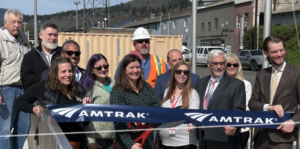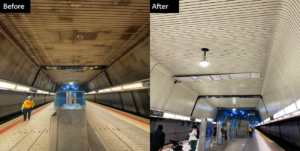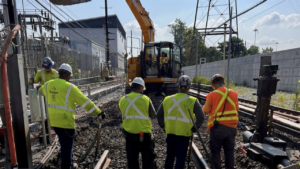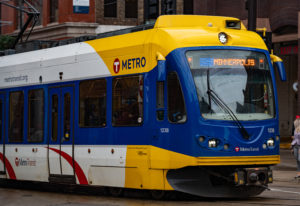Sandy Resiliency Tour displays MTA efforts to protect and strengthen infrastructure
Written by Jenifer Nunez, assistant editor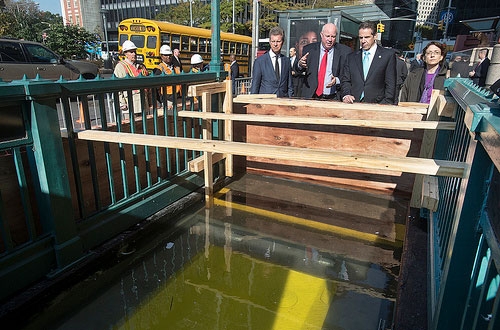
Officials on October 29 toured Lower Manhattan to see some of the emerging technologies the Metropolitan Transportation Authority (MTA) is considering as part of the agency's hardening and resiliency efforts to protect the system from future storms.
New York Gov. Andrew Cuomo, MTA Chairman and CEO Thomas Prendergast, U.S. Department of Housing and Urban Development Secretary Shaun Donovan and other officials were in attendance.
The MTA has been researching and investigating existing flood mitigation and resiliency systems used worldwide for possible adoption in New York.
The MTA is designing solutions to fully prevent water incursion at the approximately 600 entry points in Lower Manhattan, as well as vulnerable vent plants and openings in other flood prone areas. MTA New York City Transit (NYCT) is also analyzing all underground tube locations to ensure that critical points where water can enter the system are protected.
“The devastation from Superstorm Sandy affected millions of commuters who rely on the MTA system every day and while the quick restoration of service was an amazing feat, the real long-term accomplishment will be to harden the network against future storms,” Gov. Cuomo said. “Today, we saw firsthand some of the cutting edge and innovative technologies that the MTA is exploring to prevent the transit system from flooding, as part of many projects that are underway to better protect our trains, subways, buses, bridges and tunnels during extreme weather. One year after Sandy, I am pleased to see MTA’s progress in making its network stronger and more resilient, so we can keep New Yorkers moving in the future.”
Officials viewed a prototype entrance cover at the Whitehall St. subway station, developed by RSA Protective Technologies to protect at least 13 vulnerable stairwells in Lower Manhattan. This stairway cover will be able to be rapidly installed without the need of mechanized equipment.
The tour also brought officials into the new South Ferry subway station, closed since Superstorm Sandy filled the entire station with more than 14 million gallons of corrosive salt water, to view a tunnel plug under development by ILC Dover, a Department of Homeland Security vendor and supplier to NASA, to protect subway portals where grade level tracks transition to underground subways. The tunnel plug demonstrated inside the station, though not designed for use inside the subway system, is an example of the design ILC is developing for the 207th Street portal in Inwood that saw flooding during Sandy. At 207 Street, early development of a “Tensioned Curtain” (which is a derivative of the plug technology) is underway to meet that challenge. A similar prototype is being developed for a typical street stairwell entry. If successfully prototyped and tested, the MTA hopes the technology could be applied to portals and stairwell locations throughout the system.


